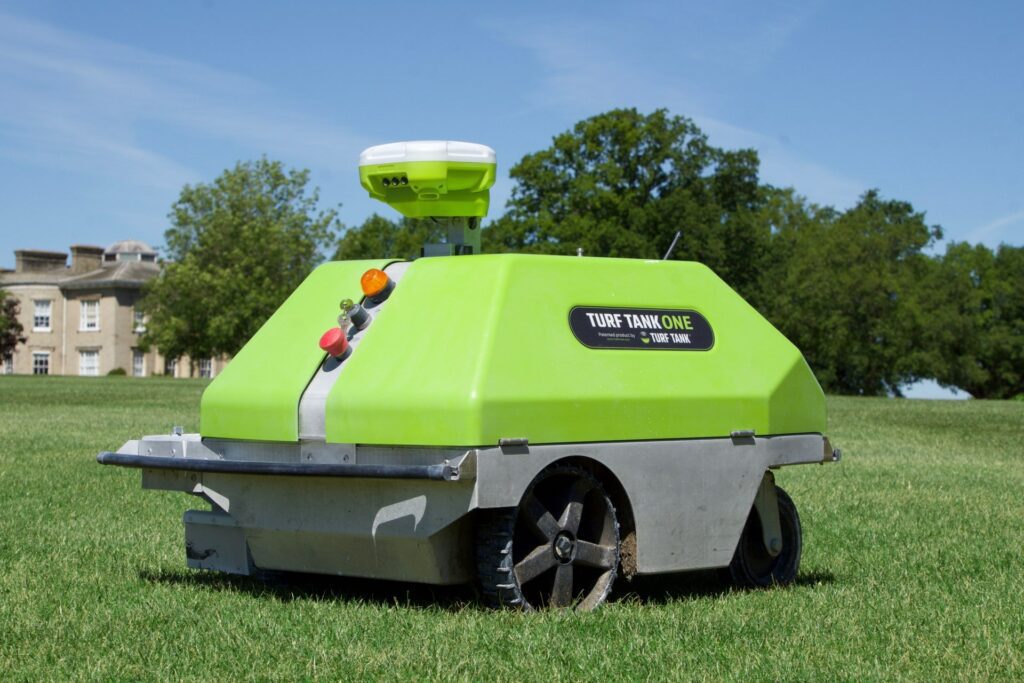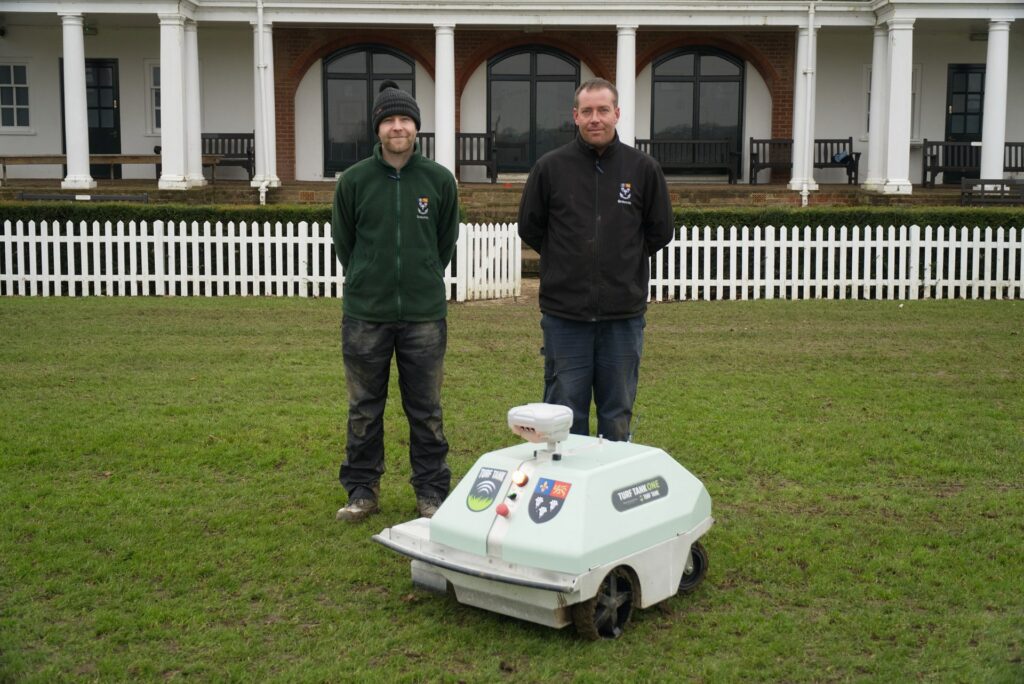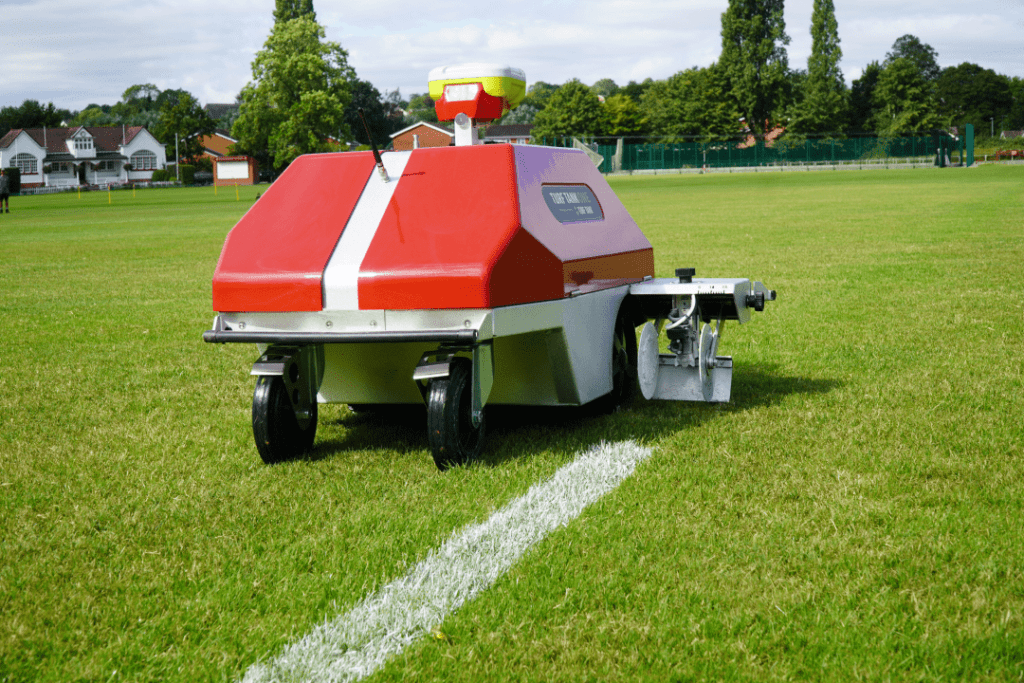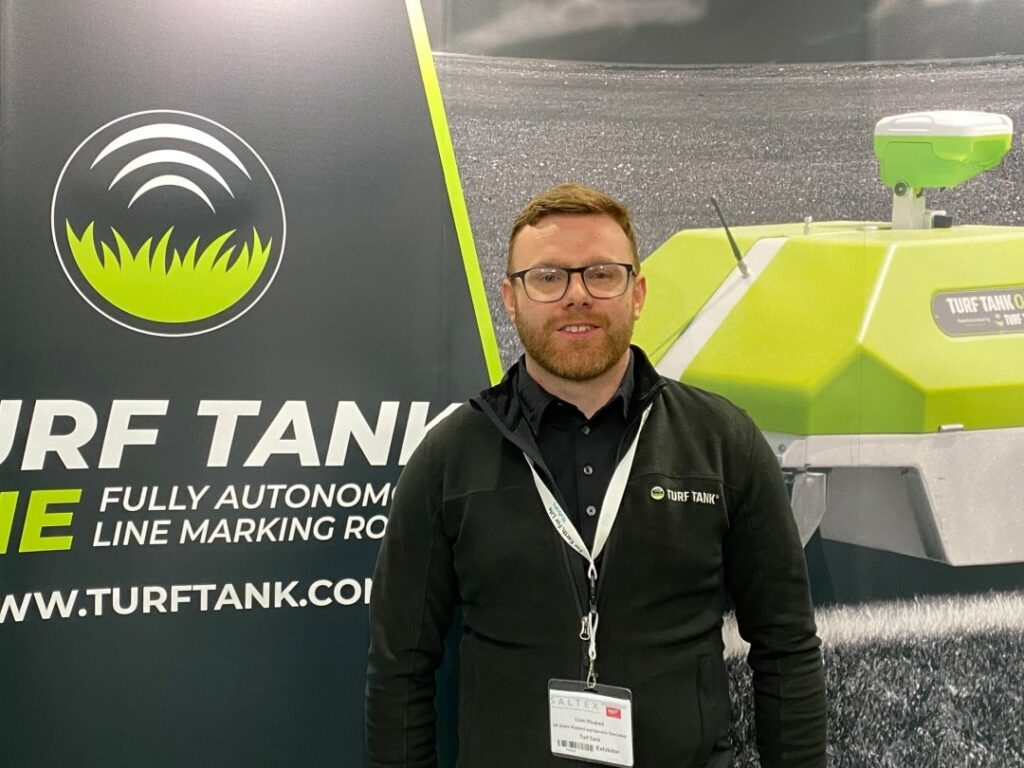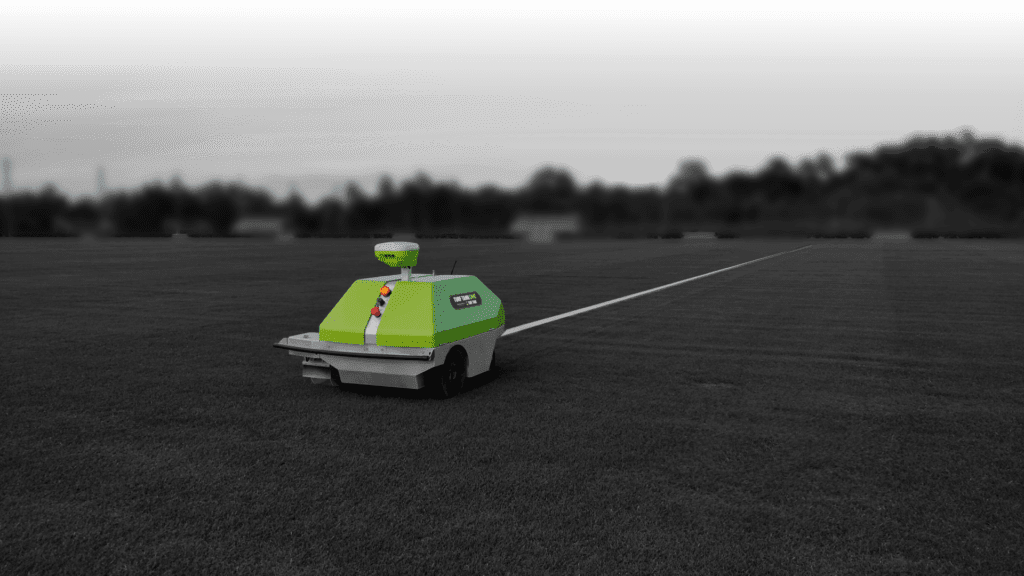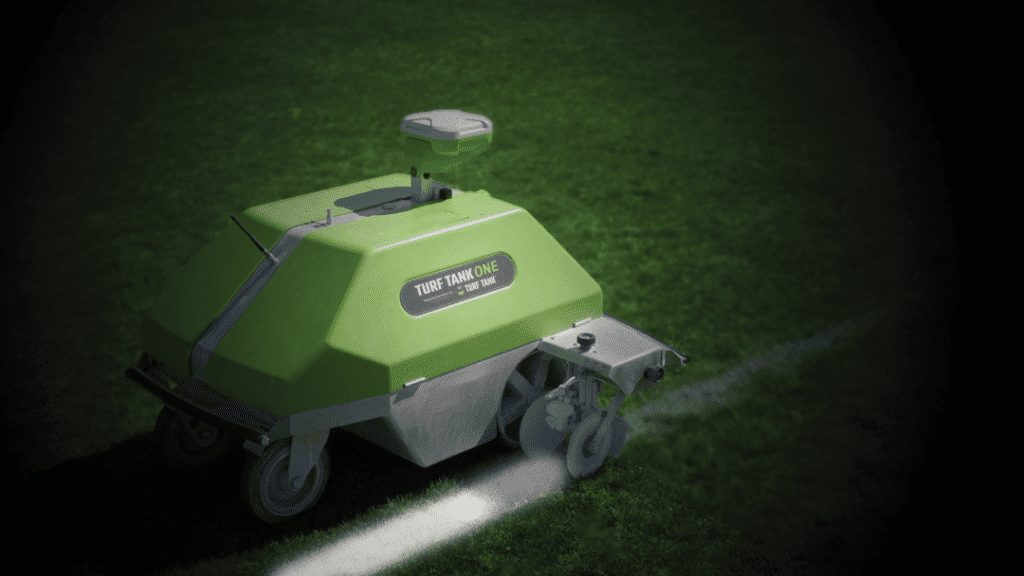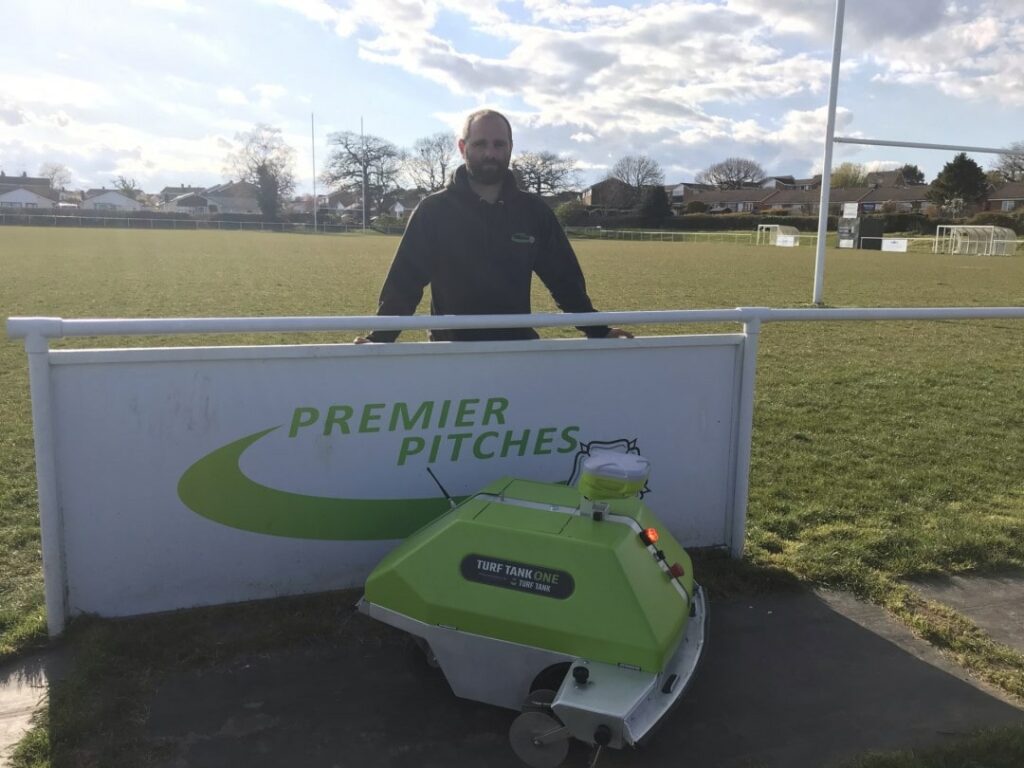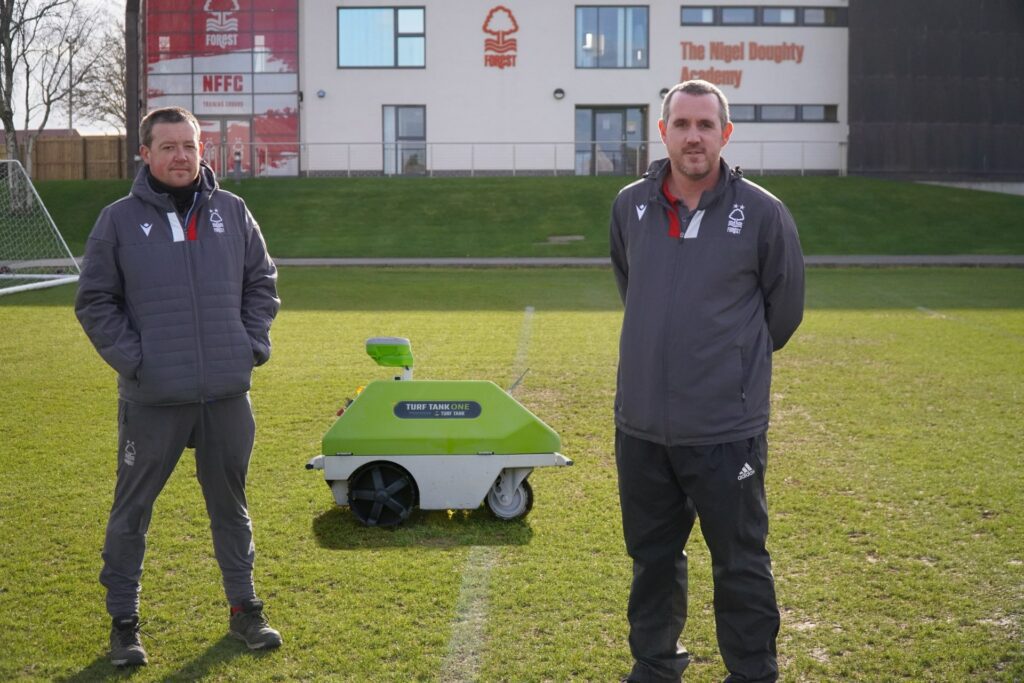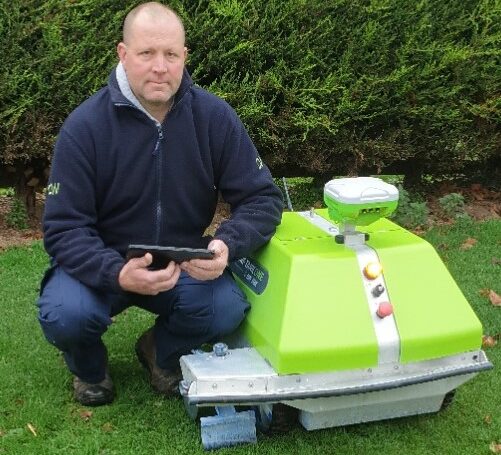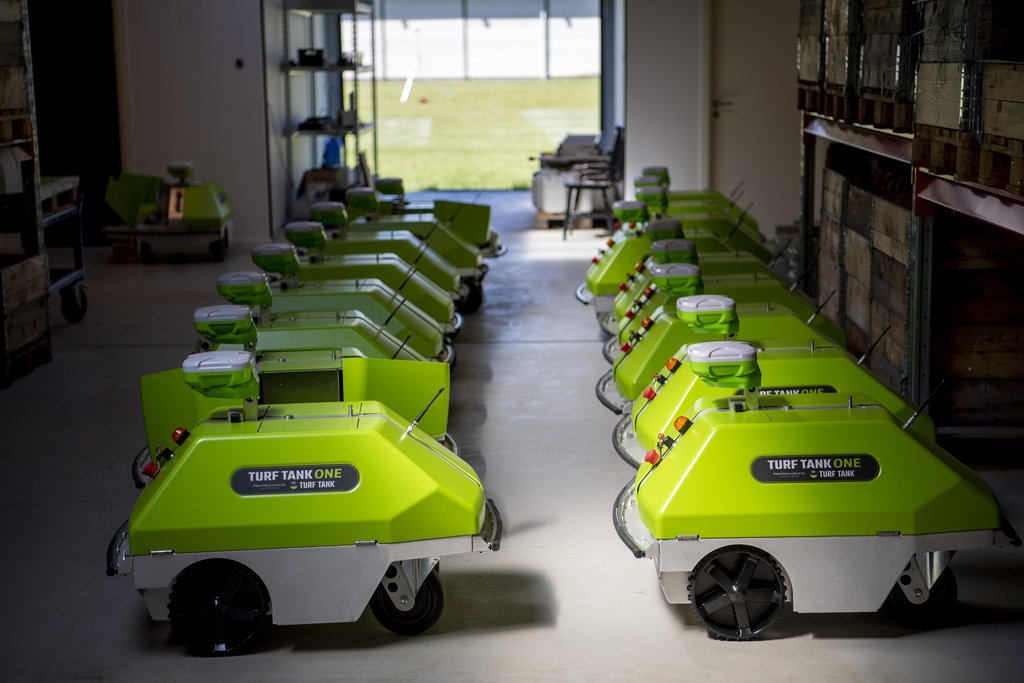A standout example of this is the 400m running track that would usually take two to three days to mark but using the Turf Tank significantly reduces that time down to just three hours. The base station works with RTK connectivity delivering a consistent GPS connection which means the marker can be used anywhere with unprecedented reliability and accuracy, without an expensive annual subscription to a cellular system.
After arriving on-site, a quick decision is made about where the track should go, and the location is plotted on the tablet.
Once the Turf Tank One begins, it only needs to stop for the paint to be refilled – otherwise, it will mark continuously until the job is complete. While it is marking, the operator is free to complete other tasks with any alerts showing on the tablet if the robot does need assistance.
Based on his experience of other GPS line marking products he has trialled, Rory had reservations about the Turf Tank’s ability to find signal deep in the Suffolk countryside, but after seeing it in action, all of his worries have been put to one side.
“Before the demo, I was sceptical about how it would perform because I’ve had other line markers that used similar technology struggle in this setting because of the signal quality we have here,” he said. “Having now had the system explained to me and how it uses the base station to eliminate any dead spots, I felt more confident in its capability, and during the demonstration, there were no issues at all.
“Usually, we would spend around two and a half days plotting out and marking our running track, but to be able to do it in three hours is a massive time saver, and it allows me to do more work around the site, so the time I get back is really invaluable.
“I can also see it saving us a lot of time when we transition back to winter sports. We play rugby, hockey and football in the winter, and some of our pitches have more than one sport marked within them and being able to initially mark a pitch from scratch in just over 20 minutes is another huge time saver.
“During the demo, Alex Robinson from Turf Tank talked me through how to change the templates, and I think with a bit of practice, it would be something that you could easily do yourself. The beauty of it is once the measurements are in, they are saved on the device, so with a push of a button, you overmark on the exact same lines again.”
For more information on the Turf Tank One or to have a demonstration contact alex@turftank.co.uk (southern UK) or matt@turftank.co.uk (northern UK).



